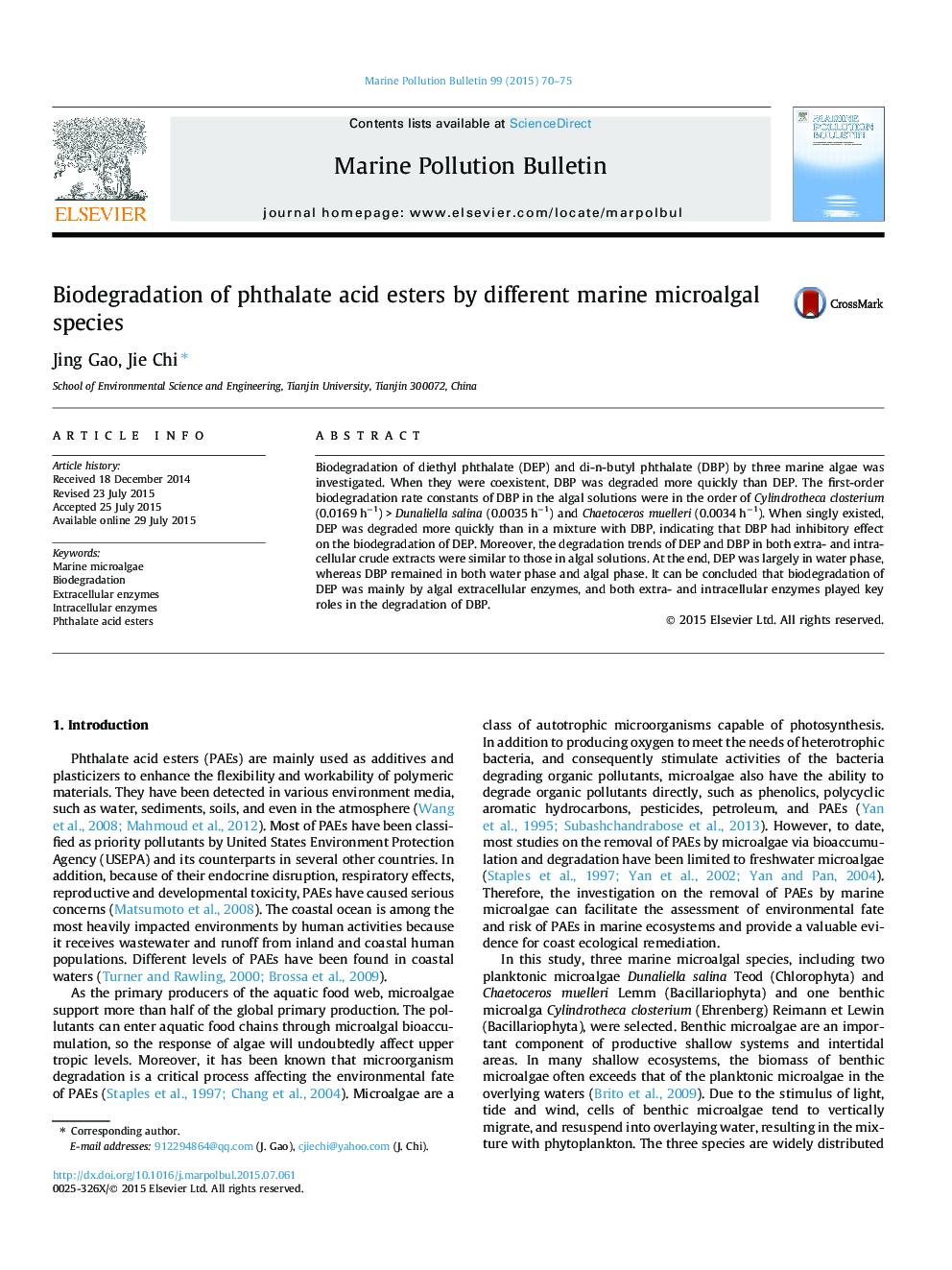| Article ID | Journal | Published Year | Pages | File Type |
|---|---|---|---|---|
| 4476651 | Marine Pollution Bulletin | 2015 | 6 Pages |
•Marine benthic alga C. closterium had the highest efficiencies of PAEs degradation.•DBP had inhibitory effect on degradation of DEP by the three marine algae.•DEP was mainly degraded by algal extracellular enzymes.•DBP was degraded by both algal extra- and intracellular enzymes.
Biodegradation of diethyl phthalate (DEP) and di-n-butyl phthalate (DBP) by three marine algae was investigated. When they were coexistent, DBP was degraded more quickly than DEP. The first-order biodegradation rate constants of DBP in the algal solutions were in the order of Cylindrotheca closterium (0.0169 h−1) > Dunaliella salina (0.0035 h−1) and Chaetoceros muelleri (0.0034 h−1). When singly existed, DEP was degraded more quickly than in a mixture with DBP, indicating that DBP had inhibitory effect on the biodegradation of DEP. Moreover, the degradation trends of DEP and DBP in both extra- and intracellular crude extracts were similar to those in algal solutions. At the end, DEP was largely in water phase, whereas DBP remained in both water phase and algal phase. It can be concluded that biodegradation of DEP was mainly by algal extracellular enzymes, and both extra- and intracellular enzymes played key roles in the degradation of DBP.
